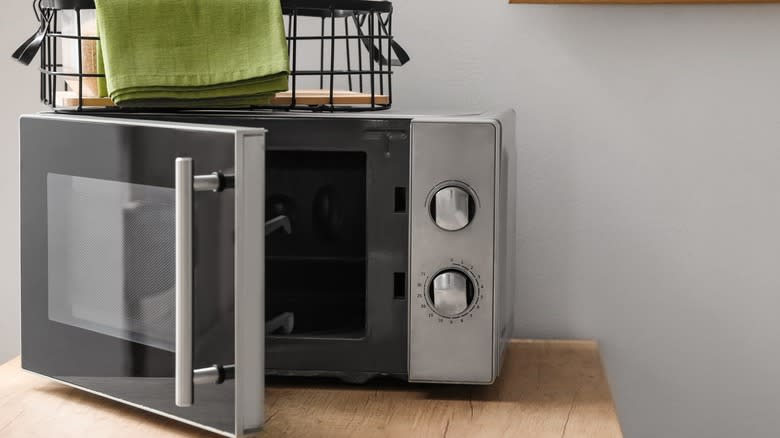A Quick Trip To The Microwave Is The Best Way To Reheat Boiled Shrimp

For seafood lovers, few things are as delightful as the succulent taste of boiled shrimp. Whether you're enjoying them in a shrimp salad or as part of a seafood platter, they're always a treat. But when you have leftovers and are looking forward to a repeat of this delicious experience the next day, reheating the boiled shrimp can be a bit tricky. It requires a delicate balance to avoid a rubbery disappointment. The secret? A quick zap in the microwave.
First, it's important to understand what the challenge is when reheating shrimp, which are small in size. The delicate nature of each crustacean means they're quite sensitive to heat and can easily transition from perfectly tender to disappointingly tough if overcooked. The trick, therefore, is to heat them just enough so they are warmed through without cooking them further. This is where the microwave comes in.
With this method, you can warm your leftovers in short, controlled bursts of a few minutes or even seconds, hence giving you the opportunity to check the shrimp's progress intermittently. Such precise control is invaluable in preventing overheating. Additionally, the microwave is fast and convenient. The whole process takes less time than it would to preheat your oven or get a pan going on the stove.
Read more: The 20 Best Olive Oils For Cooking
Spread Out Your Shrimp For Best Results In The Microwave

To start, arrange your shrimp in a single layer on a microwave-safe plate. This is important because stacking them up can cause uneven heating, with some shrimp getting too hot while others stay cold. You want each shrimp to have its fair share of the microwave's attention. So, if you're reheating a large quantity, it's better to work in batches than to overcrowd the plate. Next, drizzle a little water over the shrimp and cover with a microwave-safe lid. This setup will create a steamy environment during microwaving, which helps keep everything moist.
Since microwave strengths vary, there's no one-size-fits-all answer when it comes to timing. A good rule of thumb is to start with 30 seconds on high power for a single serving. Once the timer dings, check how warm the crustaceans are, and if they are still not done, add more time in increments of 30 seconds. Remember, it's better to underheat and then add more time than to overheat and ruin the batch. Once ready, carefully remove the lid (watch out for steam!), and you should now be looking at a plate of perfectly reheated shrimp. Enjoy.
Read the original article on Tasting Table.

 Yahoo Lifestyle
Yahoo Lifestyle 
